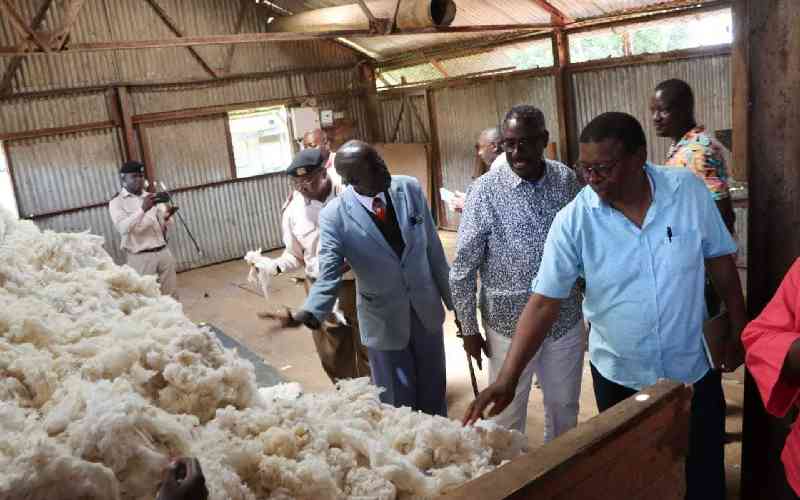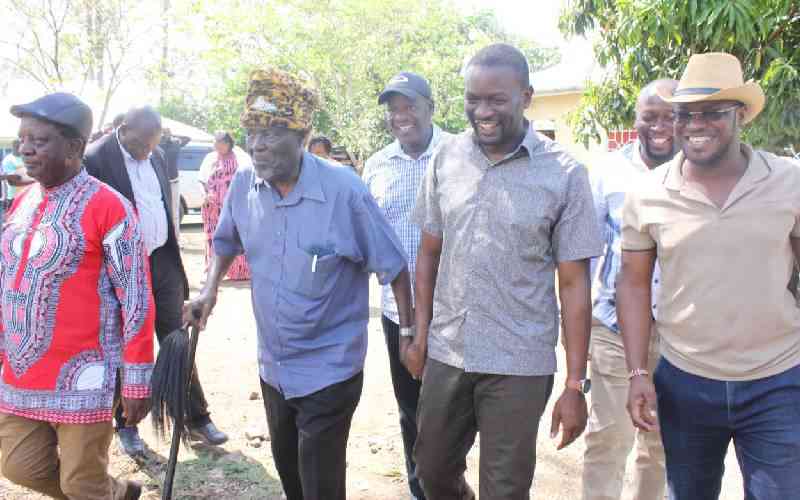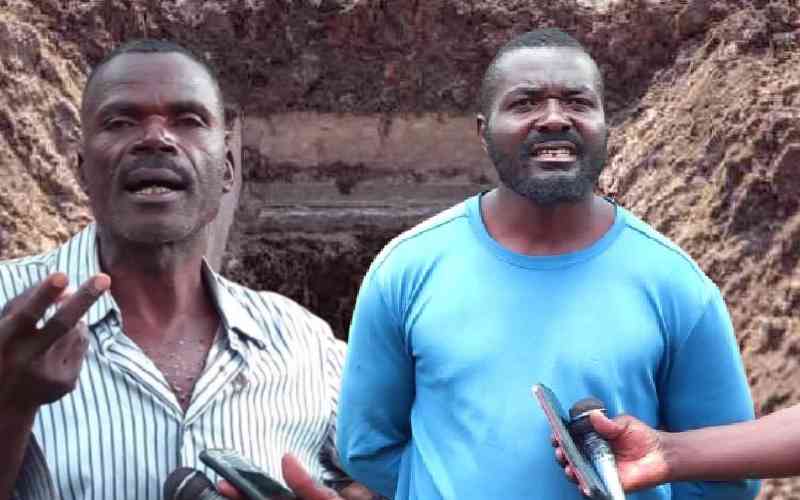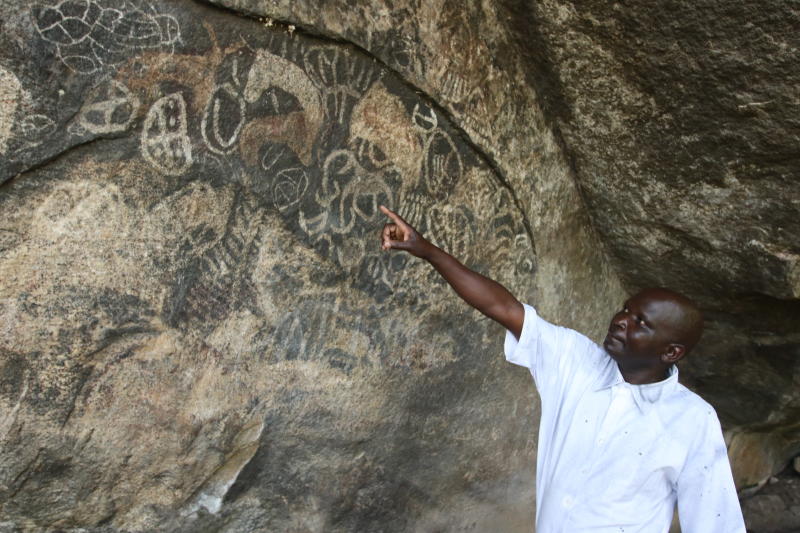
Nestled in a rocky forested area in the South Angurai Ward of Busia County, Kakapel Museum is a quiet and serene little haven where the chirping of birds welcomes visitors.
Indigenous trees, undisturbed over the years, are entangled with giant creepers along footpaths to caves and are a repository of ancient history of the Bukusu, Teso and the Twa believed to have once lived in the area.
“According to folklore, the Bukusu occupied the caves before the Teso tribe drove them out,” says Ben Omuse, a tour guide at the Kakapel Museum.
“There are several caves here, but three stand out. The first is at the base of this huge rock. The entrance is guarded by a huge boulder that appears to have been positioned to serve as a barrier,” he adds.
Beside it lies a smaller rock that Omuse explains was used by Miyalo Mangu, the last known Bukusu occupant of the cave, to trap a troublesome snake that used to sneak into it to eat chicken.
“Mangu hid behind that huge rock and waited for the snake. When it showed up, he cut off its head against the smaller rock. It is said the dismembered head bit into a tree, which dried up almost immediately while its body wreathed into the cave.”
Omuse said folklore has it that a special rite was performed, in which Mangu was taken to the riverside where he was covered in mud and later circumcised, an occurrence that gave rise to the practice of circumcision among the Bukusu.
“To date, Bukusu elders visit this site to perform rites before embarking on circumcision ceremonies held every two years,” he said.
The first cave is spacious, with a high slanting roof and has a small opening at the other end. It appears to have been chiselled out.
A slanting rock shelf next to the smaller opening shows chisel marks. The rock at the entrance also has a flat surface and bears chisel marks, possibly taken off the rock shelf. The cave floor is covered by bat droppings that have accumulated over decades.
Signs of human habitation are evident. An area that served as a fireplace is clearly marked. Above it, there is a thin, loose piece of cracked rock. “The rock cracked as a result of the fires that were constantly lit under it,” Emmanuel Odipo, a tour guide, says.
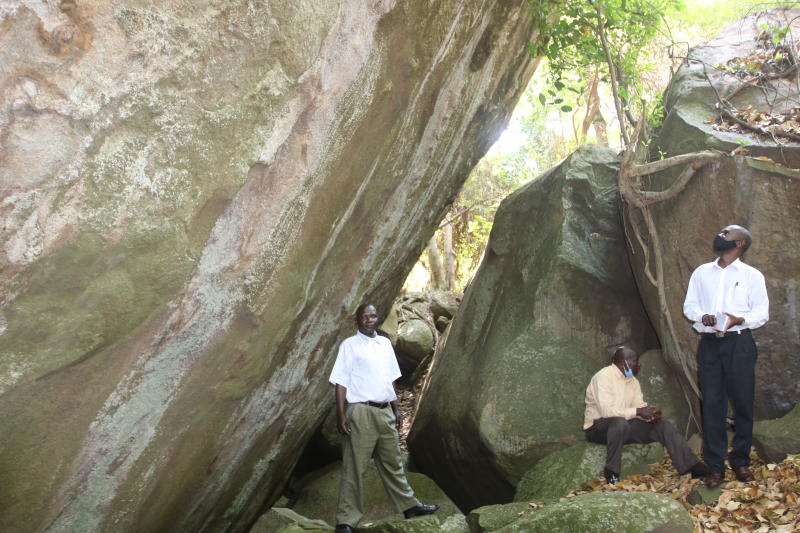
“This cave was originally occupied by the Bukusu. However, when the Teso moved into the area, there was constant conflict with the Bukusu, but after some time, the tribes resolved to end the fights,” he adds.
Bukusu and Teso elders called a meeting at which a dog was used as a sacrifice to call a truce. “Bukusu elders held the head of the dog, the Teso elders held it by the tail, upon which it was cut into half. Thereafter, the Bukusu moved to Bungoma.”
Behind the first cave, there are rock paintings believed to have been made thousands of years ago. So distinct are the paintings, it is easy to pick out a giraffe, an elephant, an antelope, among other animals.
“It is said that these paintings have existed for between 2,000 and 4,000 years. However, before the site was gazetted as a national monument in 2005, there had been attempts to deface them,” Odipo said.
The oldest known cave painting, estimated to be over 45,000 years, was discovered in Indonesia in 2018.
The second cave is on slightly higher ground, accessible through a narrow passage between two rocks. To go through it, one must bend. It juts out, giving the impression of having been carved out of the rock. The low roof bears chisel marks as well.
“Some excavation work was carried out in 2017, and it brought up a human skull, pieces of pottery and other artefacts,” Omuse said.
The third cave is also on the ground higher than the second cave. It is accessible through another narrow climbing passage dotted with indigenous trees. There is a carved cross in the rock face above what appears to have been the altar. The cave could have served as a place of worship.
Through a steep, tortuous, wandering path over slippery boulders, roots and loose rocks, it takes between 10 and 15 minutes to get to the top. Lizards, squirrels and birds scamper out of the way as the climbers go up the rock.
Once at the top, about 100 meters above the first cave, the panoramic view below is breathtaking. Mt Elgon and Tororo town in Uganda are visible at this dizzying height.
The Kakapel cultural centre has a few artefacts. There is an assortment of spears, arrows, shields made from hippo hide, a head covering from monkey skin and a loincloth made from tree bark.
“The government did well to take over the management of this tourist site. It was at risk of being lost or defaced,” says Erneo Okanya, 70.
 The Standard Group Plc is a multi-media organization with investments in media platforms spanning newspaper print
operations, television, radio broadcasting, digital and online services. The Standard Group is recognized as a
leading multi-media house in Kenya with a key influence in matters of national and international interest.
The Standard Group Plc is a multi-media organization with investments in media platforms spanning newspaper print
operations, television, radio broadcasting, digital and online services. The Standard Group is recognized as a
leading multi-media house in Kenya with a key influence in matters of national and international interest.





